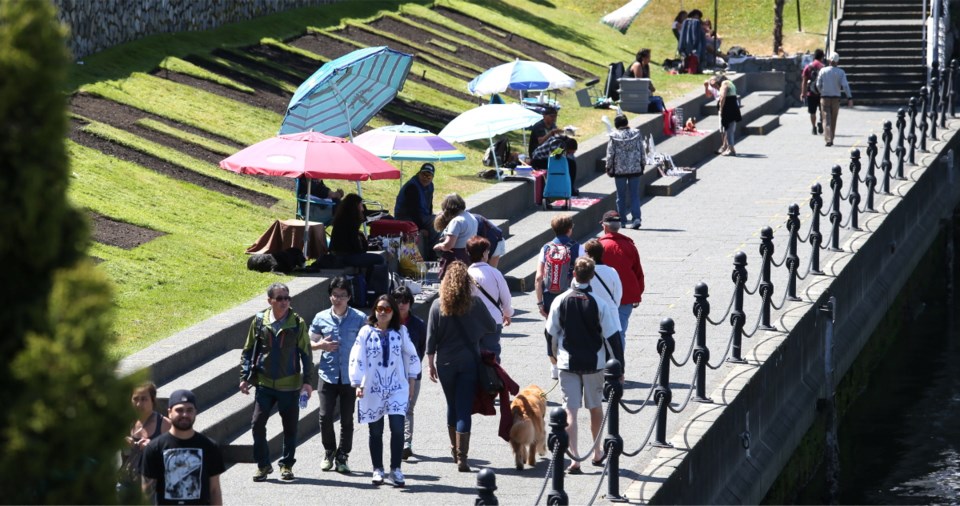Greater Victoria’s unemployment rate dropped to 5.3 per cent last month from 5.7 per cent as summer tourism season got underway.
The capital region has one of the lowest unemployment rates in the country, trailing only Quebec City, at 4.1 per cent. Vancouver is close behind at 5.4 per cent, said Statistics Canada in its labour force survey released today.
The largest increase in employment is in the professional, scientific and technical sector which saw jobs rise by 5,000 to 21,000 last month. That compares to 16,000 in June 2015, the federal agency said.
Wholesale and retail trade reports a year-over-year increase by 4,000 jobs, to 27,000 from 23,000.
Accommodation and food services stayed fairly steady at 17,500.
The largest decline was in the construction section, mimicking what has been seen across the rest of the country. There were 3,500 fewer people working in construction in the capital region last month, down to 11,000 from 14,500 in June 2015.
British Columbia was the only province to add a significant number of jobs last month with 16,000 new positions, while the labour markets in other regions experienced decreases or remained largely unchanged.
Canada’s overall labour market was stuck in neutral last month as gains in the services sector were offset by declines in factory work.
The federal agency’s latest labour force survey said the national unemployment rate fell to 6.8 per cent in June, down from 6.9 per cent the previous month.
Overall, the data indicated the country lost 700 jobs last month — a change so slight it was statistically insignificant.
Service sector jobs continued to rise last month, gaining 45,500 positions, with the biggest increases registered in accommodation and food services as well as information, culture and recreation.
Compared to 12 months earlier, the survey found that Canada had added 170,600 services jobs, an increase of 1.2 per cent.
However, in contrast, the country’s goods-producing industries shed 46,200 jobs, as construction and manufacturing industries saw the largest declines. Over the previous year, 63,000 factory jobs were lost overall — a drop of 1.6 per cent.
Employment in the category of self-employed work grew by 37,700 last month, while the number of employee positions dropped 38,400 positions, the survey found.
The data also showed that the labour market shed 40,100 full-time jobs and gained 39,400 less-desirable part-time positions. However, the agency considered both these numbers to be statistically insignificant.
A consensus of economists had predicted the country to add 5,000 jobs and for the unemployment rate to move up to seven per cent, according to Thomson Reuters.



